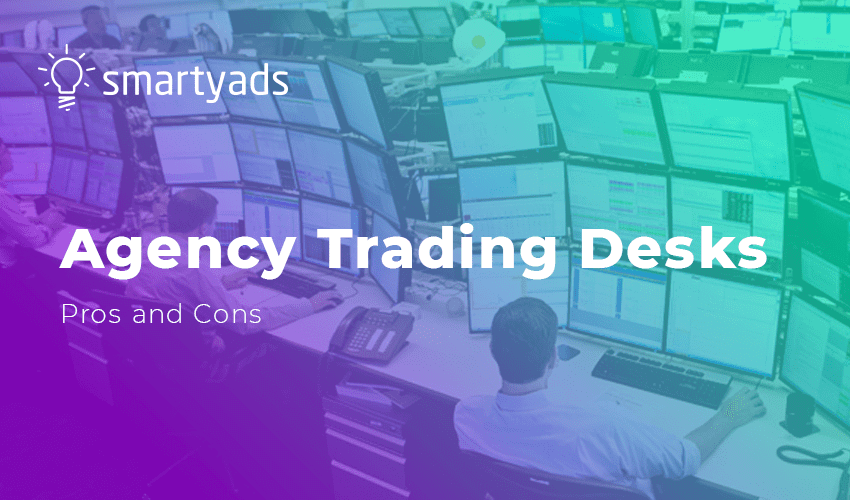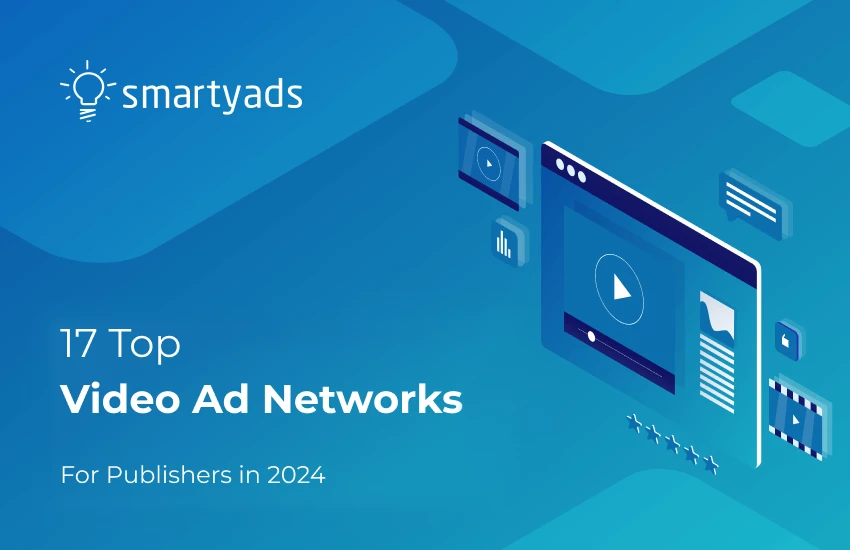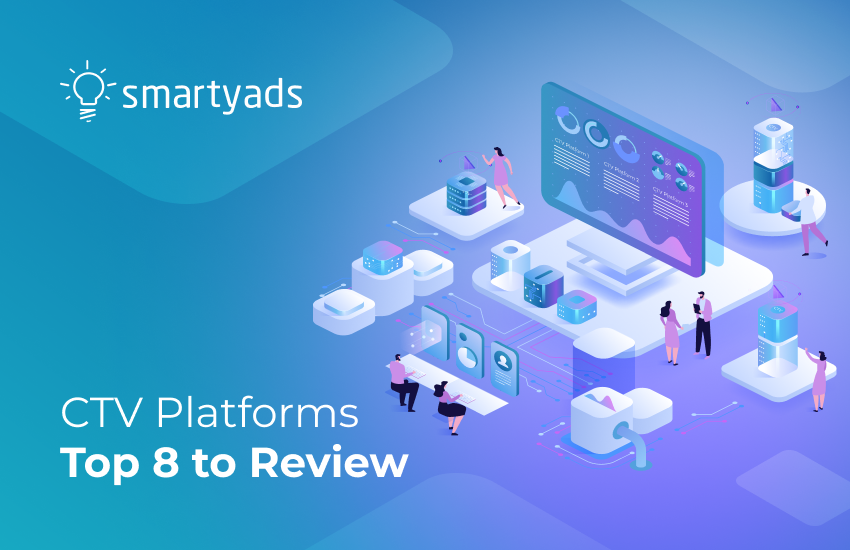If you’re a media buyer, you’ve probably asked yourself if you should work with agency trading desks (ATDs) or opt for independent ad campaign management. It’s a good question — and we’re here to help answer it.
What is an agency trading desk?
An agency trading desk (ATD) is a centralized management platform that specializes in programmatic media buying (Things you need to know about programmatic buying), optimization of the digital advertising strategy, and marketing budgets. ATDs use either proprietary technology or a combination of a licensed demand-side platform (DSP) (much more information about what is DSP you can find here), ad server, data management platform (DMP) and other audience-buying tools to provide a sufficient technical ecosystem to help clients improve campaign performance and increase obtained value from their digital ad spend.
ADTs could be:
- A part of a large media agency, such as Accuen for Omnicom, Affiperf for Havas Group or Xaxis for WPP;
- Independent service-based organizations, such as Digilant, Run or Cadreon; or
- Separate ad tech units that purchase digital media on the behalf of their clients, usually advertisers and brands.
What does an agency trading desk do?
Agency trading desks provide the following services for their clients:
- Buy large sets of digital inventory, mainly through real-time bidding auctions as a managed service;
- Establish contacts with publishers, supply-side platforms (SSPs) and ad exchanges to get premium inventory upfront at a discount rate, apply audience and behavioral analytics, add markup percentage to the cost of media, and resell it to clients on demand;
- Help advertisers plan, optimize and allocate marketing budgets;
- Advise brands on how to reach target audiences efficiently both locally and globally;
- Clarify business objectives and suggest optimal advertising strategies;
- Track campaign performance and measure results and provide clients with audience insights drawn from data analytics;
- Support common pricing models — CPM, CPC, CPI, and CPA — and might offer CPO, CPL or CPS.
What does it cost to use an agency trading desk?
Using an agency trading means paying fees for receiving professional services (targeting, audience assessment), data fees (data aggregation, data analysis), technical fees (platforms, infrastructure) and additional agency fees in the form of a percentage of media spend (read here why should you work with Agency Trading Desks). For example, according to an IAB report, platforms that facilitate programmatic sales for media companies typically keep 10 to 20 percent of the revenues. Costs connected with an agency trading desk’s services may greatly vary and should be negotiated in advance to avoid possible hidden fees.
What is the difference between agency trading desks and DSPs?
ATDs may sound pretty similar to DSPs, and there are still plenty of people who confuse these two terms. Agency trading desks are companies or organizations that employ digital media strategists, software engineers, account managers, data analysts, and other human resources to provide the digital media buying service. ATDs use one or more DSPs to buy advertising space.
DSP is a digital software developed by ad tech companies for media buyers. Through the DSP interface, advertisers can plan advertising campaigns, optimize targeting settings and buy inventory through real-time bidding auctions, private marketplaces, programmatic direct and automated guaranteed. DSPs are part of a programmatic ecosystem. They access the pool of impressions through an ad exchange and buy from SSPs or ad networks.
Using self-serve DSPs, advertisers get direct access to the available media inventory, whereas when working with ATDs, media buyers pay extra fees to delegate this task to the agency and never execute buying themselves.
What are the benefits of working with ATDs?
[ Advertiser → Agency trading desk → DSP → Access to programmatic media ]
Representatives of agency trading desks position themselves as industry specialists. They hire staff with experience, run multiple campaigns for big clients and know how to manage advertising campaigns in various market segments. ATDs use their own data management platforms and ad servers to aggregate audience-based data, analyze it and draw valuable outputs for enhanced performance — a plus for marketers. Another benefit is gaining access to historical bidding data — optimization algorithms, bidding models and response prediction that can be used for repeated campaigns.
ATDs claim to handle every aspect of the marketing campaign so brands don’t need to worry about anything. However, not everything that glitters is gold.
What are the drawbacks of working with ATDs?
Troubles with agency trading desks first arose in 2012. Since then, a growing number of high-caliber brands have moved media buying in-house to reduce costs, increase transparency and gain more control over budgets. Some ATDs were originally tech enterprises offering unique services, while others simply outsourced most of the technology and paid for the third-party DSPs. In many cases, ATD clients were paying double fees.
Another point of criticism surrounding ATDs is they have a conflict of interest: An ATD is both the seller and the buyer simultaneously; therefore, it cannot be objective. “Trading desks must evolve or face extinction,” according to Digiday UK.
In 2014, an ANA and Forrester survey revealed that 42 percent of client-side marketers reported increased concerns over the levels of transparency between the client and agency. Top issues were media buying effectiveness, performance metrics, viewability, ad serving, and billing. Some advertisers were paying up to 80 percent of their budget to the middleman, according to AudienceScience.
So, trading desk advertising or direct buys?
[ Advertiser → Agency trading desk → DSP → Access to programmatic media ]
Fortunately, marketers always have alternatives if things go wrong with an agency trading desk. It’s called do it yourself. These days, media buyers can license programmatic technology directly — with no fear of hidden margins. In-house solutions, self-serve DSPs and white-label DSPs are just a few of the options to consider. With these products, advertisers can access their campaign data anytime anywhere, track the advertising spending, check reports and control marketing budgets. So, if you still have any questions, comments and feedback, please feel free to contact us at support@smartyads.com.




